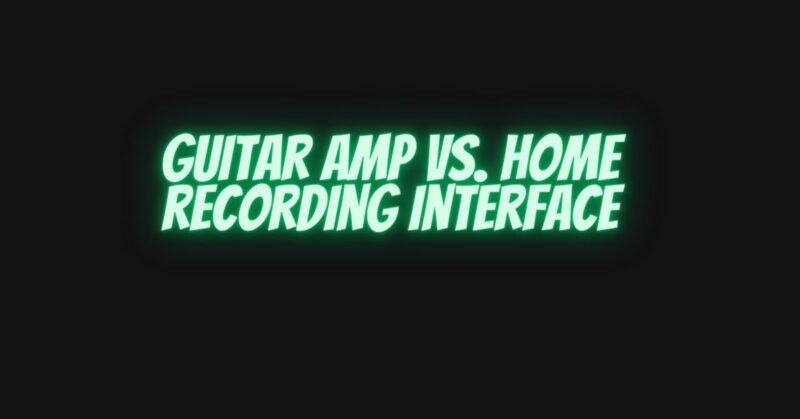When it comes to recording your guitar at home, you have two primary options: using a guitar amp or a home recording interface. Both have their strengths and unique features, catering to different recording setups and preferences. In this article, we’ll explore the differences between the two and help you decide which one suits your home recording needs best.
Guitar Amp: Capturing the Classic Tone
A guitar amp is a traditional approach to recording guitars, used for decades in professional studios and live performances. Guitar amps come in various types, such as tube amps, solid-state amps, and digital modeling amps. They have built-in preamps, power amps, and speaker cabinets that shape the tone of your guitar before it reaches the recording medium.
Advantages of Using a Guitar Amp:
- Classic Tone: Guitar amps are renowned for their distinct and classic tones, especially tube amps that offer warm and rich sounds with natural overdrive when cranked.
- Real-Time Playing: With a guitar amp, you can capture your performance in real-time as you would during a live gig, offering a dynamic and responsive recording experience.
- Onboard Effects: Many guitar amps come with built-in effects like reverb, delay, and modulation, allowing you to experiment with different sounds without the need for additional pedals or plugins.
- Standalone Use: Guitar amps can be used independently for practice and live performances, making them a versatile option for both recording and performance needs.
Home Recording Interface: The Digital Hub
A home recording interface, also known as an audio interface, is a digital device that connects your guitar directly to your computer. It serves as a bridge between your instrument and recording software, converting analog signals to digital for processing and recording.
Advantages of Using a Home Recording Interface:
- High-Quality Audio: Home recording interfaces provide high-resolution audio conversion, ensuring pristine sound quality and accurate reproduction of your guitar’s tone.
- Versatility: In addition to recording guitars, home recording interfaces can handle multiple audio inputs, making them suitable for recording vocals, keyboards, and other instruments.
- Amp and Effect Simulation: Many recording interfaces offer amp and effect simulation plugins, allowing you to access a wide range of virtual amps, cabinets, and effects directly within your recording software.
- Direct Monitoring: Home recording interfaces often feature direct monitoring capabilities, enabling low-latency monitoring while recording, reducing any delay between playing and hearing your sound.
Choosing the Right Gear for Your Home Recording Setup
The decision between using a guitar amp or a home recording interface depends on your recording goals, available space, and desired tonal qualities.
If you seek the classic and authentic sound of a guitar amp with the convenience of standalone use for performances, a guitar amp might be the right choice. It’s an excellent option if you already have a preferred amp and prefer real-time playing during recording sessions.
On the other hand, if you value versatility, high-quality audio, and the flexibility of amp and effect simulation, a home recording interface can be a more comprehensive solution. It allows you to access a vast library of virtual amps and effects, ideal for home recording enthusiasts with limited space or budget.
Some guitarists even combine both approaches by using a home recording interface to capture a direct, clean signal from the guitar and then applying amp and effect simulations during post-production. This approach offers the best of both worlds, combining the convenience of digital processing with the charm of classic amp tones.
Ultimately, the choice between a guitar amp and a home recording interface comes down to your preferences, recording setup, and the specific sounds you want to achieve. Both options offer their unique benefits and can elevate your home recording experience to new heights.


